
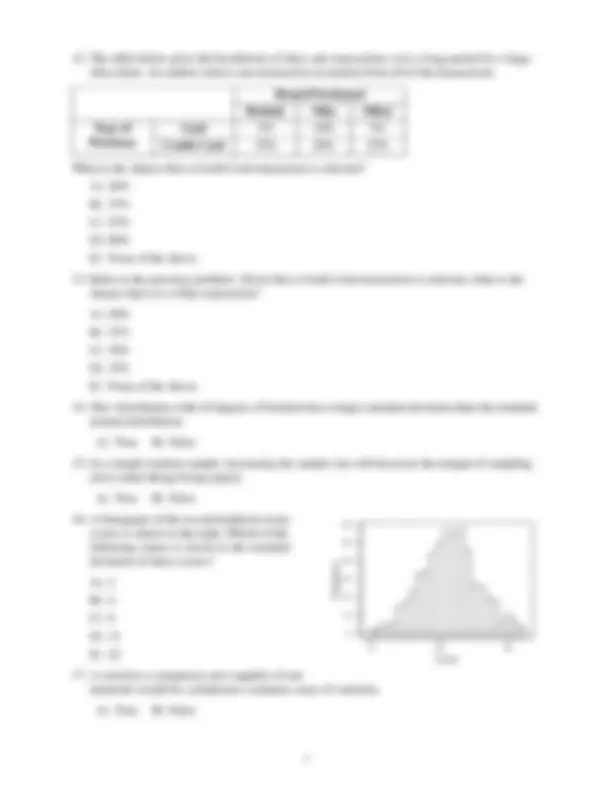
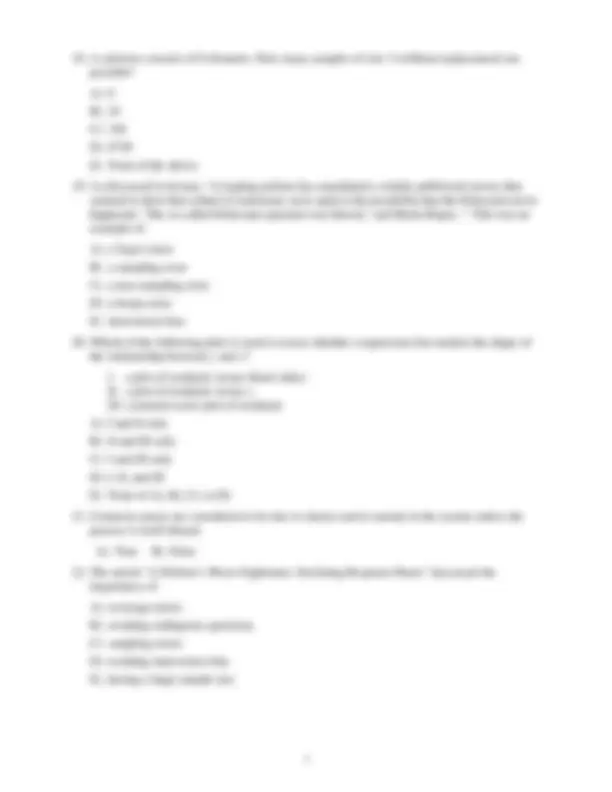
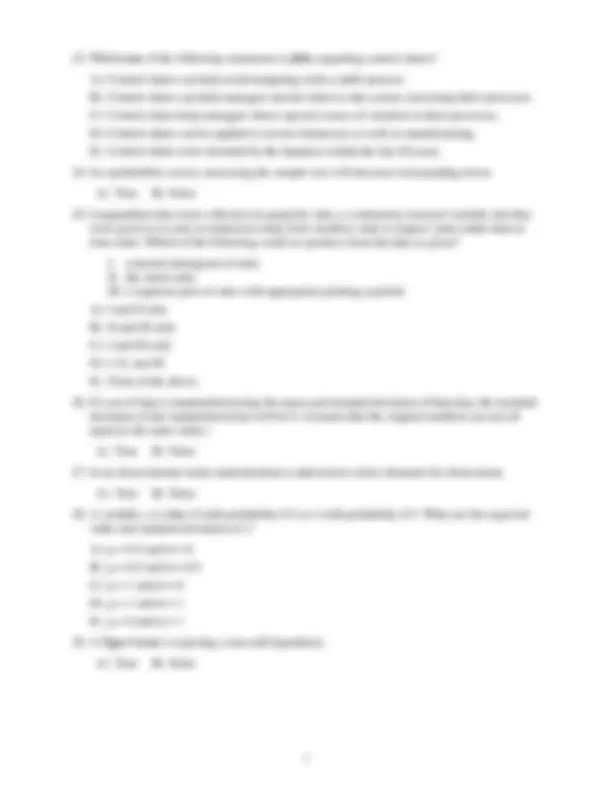
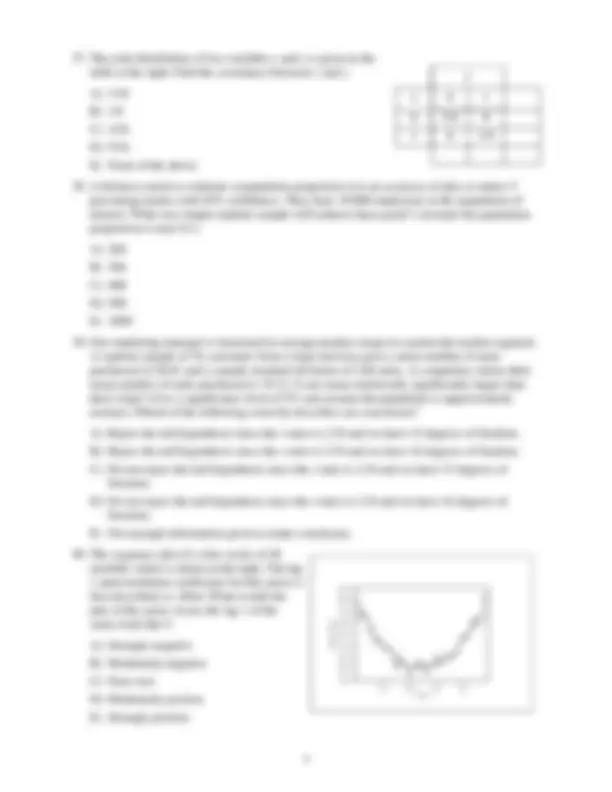
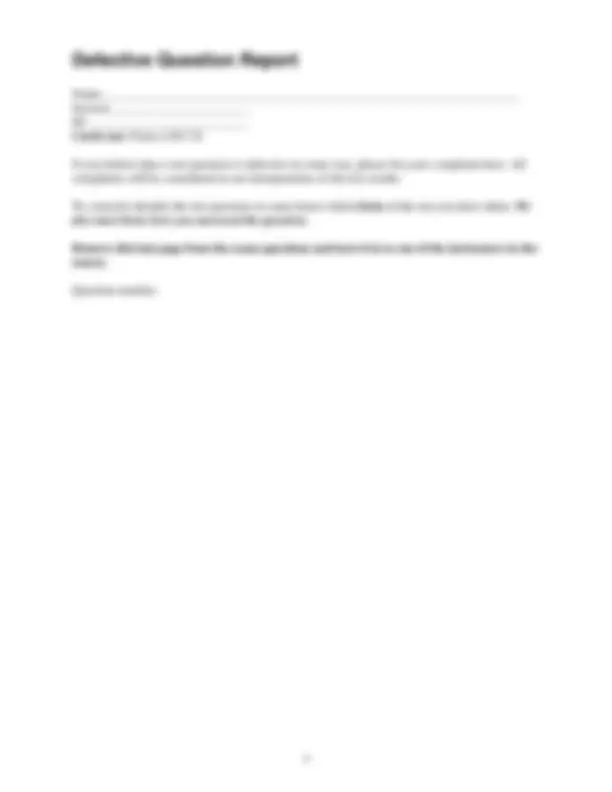


Study with the several resources on Docsity

Earn points by helping other students or get them with a premium plan


Prepare for your exams
Study with the several resources on Docsity

Earn points to download
Earn points by helping other students or get them with a premium plan
Community
Ask the community for help and clear up your study doubts
Discover the best universities in your country according to Docsity users
Free resources
Download our free guides on studying techniques, anxiety management strategies, and thesis advice from Docsity tutors
This is the Past Exam of Business Statistics which includes Residual, Diameter, Fitted Regression, Predicts, Volume, Diameter and Height, Largest Residual, Residual Standard Deviation, Model Fit etc. Key important points are: Customers Expectations, Bernoulli Trials, Success Probability, Process, Expected, Produce Goods, Services, Continuous, Regression Model, Steel Plate
Typology: Exams
1 / 9

This page cannot be seen from the preview
Don't miss anything!






The 40 exam questions and answer sheet are both to be turned in to your Discussion Section instructor at the end of the exam. Code your name and ID number on the answer sheet. Code your Section number under OPTIONAL CODES in positions L M N.
A) True B) False
A) True B) False
A) True B) False
A) The approximate normality of the sampling distribution of the sample mean. B) The fact that the mean of the mean is the mean. C) The fact that. D) The uniform distribution of the individual spots on the dice. E) All of the above.
-2 -1 0 1 2
2 1 0
Y
1.5 2.5 3.5 4.5 5.
Average
Density
1 2 3 4 5 6
Spots
Density
σ y =σ ⁄( n )
A) Control charts can help avoid tampering with a stable process. B) Control charts can help managers decide when to take action concerning their processes. C) Control charts help managers detect special causes of variation in their processes. D) Control charts can be applied to service businesses as well as manufacturing. E) Control charts were invented by the Japanese within the last 20 years.
A) True B) False
A) True B) False
A) True B) False
y x 0 1 0 3/4 0 1 0 1/
10 20 30 40 100
200
300
400
500
600
700
800
900
Time
Series Value